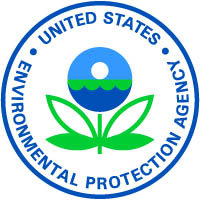02
Nov
EPA Continues Trend of Pesticide Approval without Adequate Review
(Beyond Pesticides, November 2, 2015) The Center for Biological Diversity (CBD) submitted a formal notice last week for intent to sue the Environmental Protection Agency (EPA) for approving benzovindiflupyr, a fungicide that is highly toxic to fish and aquatic invertebrates. CBD asserts that EPA recognized that benzovindiflupyr could harm wildlife and critical habitat protected by the Endangered Species Act (ESA), but approved it for use without consulting with expert wildlife agencies as required by the act. This is not the first time that EPA has approved toxic chemicals without fully understanding the consequences.
 On August 28, 2015, EPA granted broad approval for use of benzovindiflupyr on most crops, including cereals, corn, vegetables, fruits, turf grass and ornamentals. The agency’s own data show that benzovindiflupyr is highly persistent in the environment and will build up in waterways due to runoff from treated fields. Nonetheless, EPA approved benzovindiflupyr for immediate use. “This pesticide is highly poisonous to fish and other wildlife, but the EPA approved it anyway,” said Stephanie Parent, senior attorney at the Center for Biological Diversity, in their press release. “This agency’s cavalier approach to approving new toxic chemicals without required consultation or studies must end. The EPA’s indifference is once again putting imperiled wildlife across the country in harm’s way.” ESA requires EPA to consult with federal wildlife biologists on the effects of chemicals applied in the habitat of endangered species. EPA failed to follow these requirements.
On August 28, 2015, EPA granted broad approval for use of benzovindiflupyr on most crops, including cereals, corn, vegetables, fruits, turf grass and ornamentals. The agency’s own data show that benzovindiflupyr is highly persistent in the environment and will build up in waterways due to runoff from treated fields. Nonetheless, EPA approved benzovindiflupyr for immediate use. “This pesticide is highly poisonous to fish and other wildlife, but the EPA approved it anyway,” said Stephanie Parent, senior attorney at the Center for Biological Diversity, in their press release. “This agency’s cavalier approach to approving new toxic chemicals without required consultation or studies must end. The EPA’s indifference is once again putting imperiled wildlife across the country in harm’s way.” ESA requires EPA to consult with federal wildlife biologists on the effects of chemicals applied in the habitat of endangered species. EPA failed to follow these requirements.
In addition, EPA approved products containing benzovindiflupyr and three other pesticides ””difenoconazole, propiconazole and azoxystrobin”” despite the fact that none of the chemicals had undergone proper consultation for their impacts on certain wildlife species. EPA also refused to consider the impacts of benzovindiflupyr when combined with these other chemicals, despite the likelihood that synergistic impacts may make these products more toxic.
EPA’s approval of toxic products without following proper procedure is nothing new. On October 23, 2015, a coalition of public health, conservation and food safety groups filed their opening brief in the ongoing legal challenge to EPA approval of the herbicide Enlist Duo for use on genetically engineered corn and soybeans. The groups argue that in its approval of Enlist Duo, a combination of the herbicides 2,4-D and glyphosate, the agency disregarded negative impacts on sensitive species, including nearly two hundred species protected under the ESA. In September 2015, after EPA unconditionally registered sulfoxaflor (a bee-toxic insecticide similar to neonicotinoids) without obtaining the necessary impact information, the Ninth Circuit Court of Appeals unequivocally rejected the unconditional registration of the toxic insecticide as a response to a 2013 lawsuit filed against EPA. The Court concluded that EPA violated federal law and its own regulations when it approved sulfoxaflor without reliable studies regarding the impact that the insecticide would have on honey bee colonies.
Beyond Pesticides has long advocated a regulatory approach that prohibits high hazard chemical use and requires alternative assessments. Farm, beekeeper, and environmental groups, including Beyond Pesticides, have urged EPA to follow in the European Union’s footsteps by following the precautionary principle, which generally approves products after they have been assessed for harm, not before. Beyond Pesticides suggests an approach that rejects uses and exposures deemed acceptable under risk assessment calculations, and instead focuses on safer alternatives that are proven effective, such as organic agriculture, which prohibits the use of toxic chemicals.
Source: The Center for Biological Diversity
All unattributed positions and opinions in this piece are those of Beyond Pesticides.










